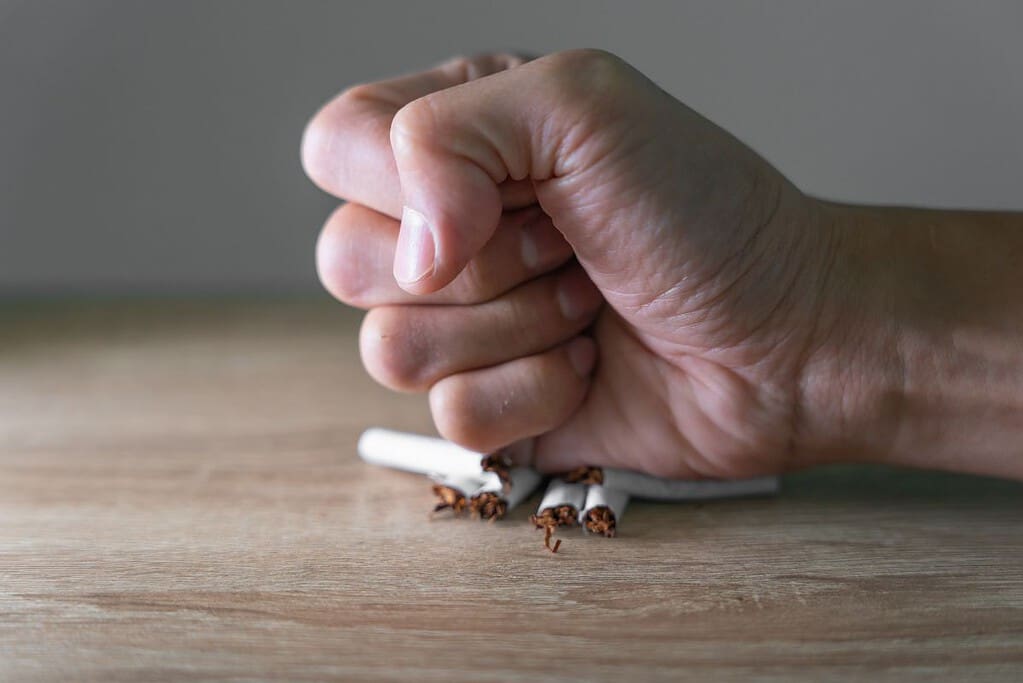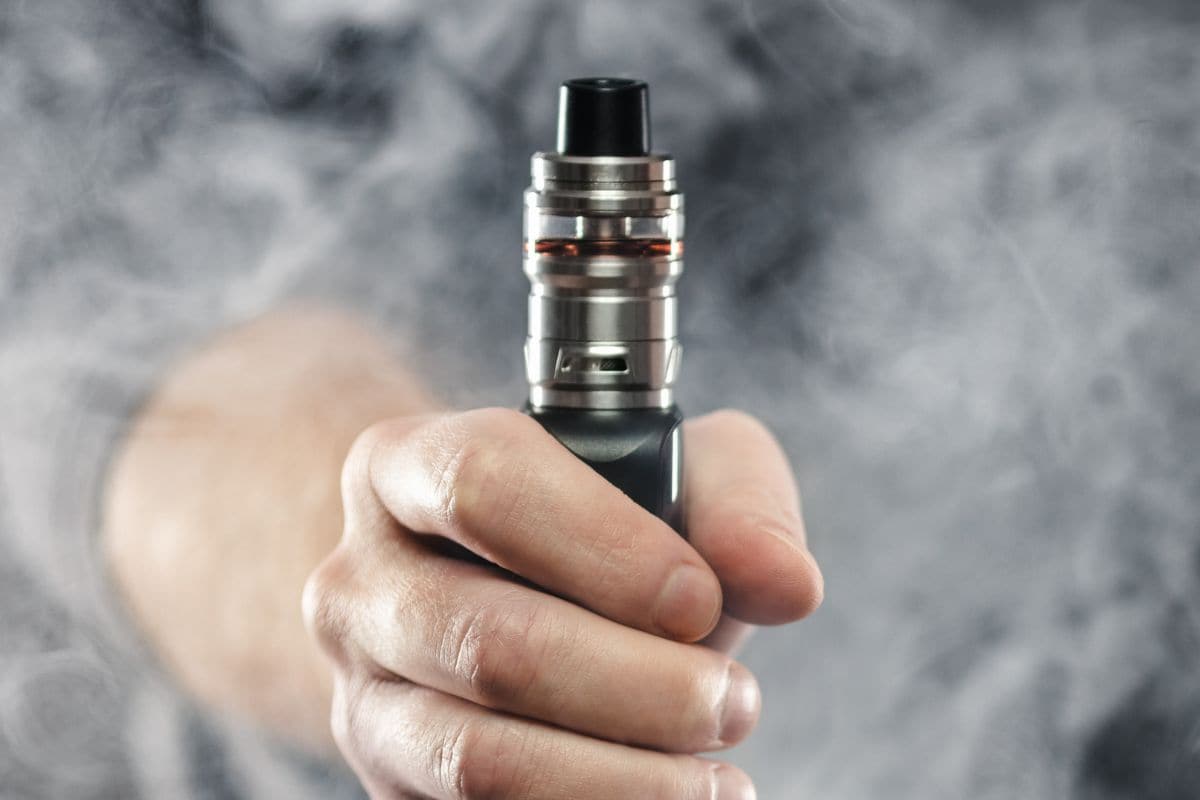Vaping Withdrawal Timeline: A Concise Overview
Vaping is a prevalent method of nicotine consumption, with many individuals choosing e-cigarettes over traditional tobacco products. While vaping might be seen as a relatively safer alternative to smoking, it is not without its potential issues, including withdrawal symptoms experienced by users trying to quit. A proper understanding of the withdrawal timeline is essential for those considering cessation, as well as for healthcare providers treating patients with nicotine dependence.
Withdrawal from nicotine vaping, just like quitting smoking, can lead to various physical and psychological symptoms. These may include irritability, anxiety, depression, cravings, and difficulties in concentrating, among others. Nicotine withdrawal symptoms can vary between individuals and might be influenced by factors such as the duration of usage, the nicotine concentration, and possible comorbidity with other substances.
Several studies have attempted to investigate the withdrawal process and timeline for those quitting vaping. For instance, a study found acute psychosis in a young man experiencing withdrawal from nicotine vaping, where symptoms intensified after a week of cessation. Meanwhile, other resources, such as Reddit communities, share personal experiences of users reporting intense withdrawal symptoms during their quit journey. However, further research is necessary to obtain a more accurate and comprehensive understanding of the vaping withdrawal timeline and effective cessation methods.
Table of Contents
The Nature of Vaping and Nicotine Addiction
Vaping has become a popular alternative to smoking traditional tobacco products. The primary addictive substance in both vaping and smoking is nicotine, a chemical naturally found in tobacco plants. When nicotine is consumed, it stimulates the release of dopamine in the brain, creating a pleasurable sensation. This makes nicotine a highly addictive substance that can lead to dependence and withdrawal symptoms when not consumed regularly.
E-cigarettes, which are a popular form of vaping, deliver nicotine in the form of a vapor, without the combustion of tobacco. This method is thought to be less harmful than smoking, as it doesn’t produce the same harmful byproducts. However, the risks and long-term effects of e-cigarettes are still being studied.
The addictive nature of nicotine, combined with the ease of use and discrete nature of vaping devices, can lead to regular users developing a nicotine addiction. The severity of an individual’s addiction depends on factors such as vaping history, frequency of use, and the concentration of nicotine in the e-liquid. Withdrawal symptoms can manifest when a user attempts to quit or reduce their nicotine intake. These symptoms can include irritability, anxiety, difficulty concentrating, increased appetite, and craving for nicotine.
In contrast to traditional tobacco products, e-cigarettes offer a wider range of nicotine concentrations. This allows users to self-titrate their nicotine intake, potentially reducing withdrawal symptoms during efforts to quit. However, it’s essential to recognize that nicotine dependence remains a possibility with vaping, regardless of the delivery method.
Understanding the nature of vaping and nicotine addiction is crucial for informing users about potential risks and offering support for those seeking to overcome their dependence on this addictive substance.
NEW CUSTOMER DISCOUNT
Save 15%
15% OFF YOUR ENTIRE ORDER FOR NEW CUSTOMERS USE CODE WELCOME15!


Understanding Withdrawal Symptoms
Withdrawal symptoms are a common experience for individuals who quit smoking or vaping. These symptoms arise due to the absence of nicotine, a highly addictive substance found in cigarettes and e-cigarettes. The severity and duration of withdrawal symptoms vary depending on factors such as the individual’s level of nicotine dependence, personal health, and history of addiction.
One of the most prevalent effects of nicotine withdrawal is the onset of physical symptoms. These can include headaches, nausea, dizziness, and sweating. Additionally, many people experience increased appetite, which can contribute to weight gain during the withdrawal process. Some ex-smokers may also develop a temporary cough or experience constipation as their bodies adjust to the absence of nicotine.
Apart from physical discomforts, nicotine withdrawal can have a significant impact on an individual’s emotional state. Common emotional symptoms include anxiety, irritability, depression, and mood swings. These can often be exacerbated by difficulties in concentration, memory lapses, and restlessness. Insomnia and difficulty sleeping are also frequently reported withdrawal symptoms that can compound the emotional challenges faced during this period.
Nicotine cravings are another aspect of withdrawal that many individuals struggle with. The intensity and duration of these cravings vary but can be a significant obstacle to overcome in quitting smoking or vaping. Managing such cravings is a key aspect of successfully navigating the withdrawal process.
In conclusion, understanding the range of withdrawal symptoms, both physical and emotional, can help individuals better anticipate and cope with the challenges of quitting smoking or vaping. A supportive network of friends, family, and healthcare professionals can play a crucial role in ensuring a successful transition to a nicotine-free life.

Timeline of Vaping Withdrawal
The timeline of vaping withdrawal can vary depending on factors such as the individual’s history of nicotine use and their vaping habits. However, there are some typical trends that can be observed during the quitting process.
During the first week after quitting, users may experience an increase in withdrawal symptoms such as irritability, anxiety, and cravings. These symptoms may peak around day 3 to 5 and then begin to subside. Users may also experience changes in appetite, sleep patterns, and cognitive performance during this initial week.
As time progresses into the second week of withdrawal, the intensity of symptoms typically lessens, and the user’s physical and mental health starts showing signs of improvement. Previous smokers may notice reduced coughing and improved lung function, as well as more stable mood and reduced nicotine cravings.
By the end of the first month of e-cigarette abstinence, the majority of withdrawal symptoms should have subsided significantly. At this point, former users may experience only occasional cravings or triggers when exposed to situations that remind them of their previous vaping habit. These cravings tend to decrease in frequency and intensity as more time passes without using e-cigarettes.
It is essential to note that the timeline for vaping withdrawal can vary greatly from person to person based on their use patterns, vaping history, and individual physical and mental health factors. Proactively managing withdrawal symptoms through support, exercise, and other coping strategies can help mitigate the discomfort associated with the quitting process and eventually lead to a successful nicotine-free lifestyle.

Coping Strategies for Dealing with Nicotine Cravings
Dealing with nicotine cravings can be challenging, but there are several effective coping strategies that can help individuals manage these urges. One primary method is to identify and understand the triggers that prompt cravings. This awareness allows individuals to avoid or minimize exposure to these triggers, helping them reduce cravings.
Seeking out support during the withdrawal process is also essential. Friends, family, and support groups can provide encouragement and understanding. Some people may also benefit from professional assistance, such as counseling, to help them navigate the emotional aspects of quitting.
Incorporating regular exercise into daily routines can alleviate stress and help manage cravings. Physical activity naturally increases mood-enhancing chemicals in the brain and can provide a positive outlet for nervous energy, reducing the urge to use nicotine products.
Stress reduction techniques, such as deep breathing exercises, meditation, or mindful relaxation, can help manage both stress and nicotine cravings. These methods enable individuals to redirect their focus from the craving and regain a sense of control.
Another effective coping strategy is to have a healthy snack or chew some gum when a craving arises. This can distract individuals from their cravings and provide a healthier alternative to vaping or smoking.
Engaging in social activities that don’t revolve around nicotine can also help combat cravings. Building new social connections and providing opportunities for positive reinforcement can help reinforce the decision to quit.
Overall, employing a combination of these coping strategies can help individuals manage nicotine cravings more effectively during their withdrawal journey. The key is to remain patient, proactive, and flexible, adapting to personal circumstances and adopting strategies that work best for each individual’s needs.

Quitting Methods and Nicotine Replacement Therapy
Quitting smoking or vaping can be a challenging process, but there are various methods and treatments available to support individuals in overcoming nicotine addiction. One of the most widely used approaches is nicotine replacement therapy (NRT), which comes in several forms, such as gum, patches, lozenges, and inhalers. NRT products deliver a controlled dose of nicotine to help reduce cravings and withdrawal symptoms, making it easier for individuals to quit.
In addition to NRT, there are prescription medications like bupropion (Zyban) and varenicline (Chantix) that can aid in smoking cessation. Bupropion works by reducing the intensity of cravings and withdrawal symptoms, while varenicline acts on the brain’s nicotine receptors, decreasing the pleasurable effects of smoking and diminishing withdrawal symptoms. These medications usually require a prescription and must be taken under a healthcare provider’s guidance.
When quitting vaping, it can be beneficial to consider using a similar approach to traditional smoking cessation methods, as they both involve nicotine dependence. Utilizing NRT products or prescription medications like bupropion and varenicline may assist individuals in breaking free from vaping habits more effectively.
It is essential to remember that every individual’s journey to quitting smoking or vaping is different, and it may take time to find the most suitable method for each person. A combination of treatments, support from friends and family, and counseling or behavioral therapy can drastically improve the chances of success.
Evidence suggests that e-cigarettes may also play a role as a smoking cessation tool. A randomized trial found that e-cigarette use in a quit attempt can facilitate success, particularly when compared to traditional NRT. However, more research is needed to determine the long-term effectiveness and safety of e-cigarettes for smoking cessation purposes.
In conclusion, several quitting methods and nicotine replacement therapies can effectively support individuals in overcoming their nicotine addiction. It is crucial to explore the available options and develop a personalized strategy for quitting smoking or vaping, ensuring the highest chance of long-term success.

Benefits of Quitting Vaping
Quitting vaping comes with numerous health and lifestyle benefits. One significant improvement individuals may experience is an enhanced sense of taste and smell. As vaping can diminish the sensitivity of these senses, giving up e-cigarettes can lead to a more enjoyable eating experience as well as the ability to appreciate various scents in the environment.
In terms of physical health, quitting vaping can result in notable improvements to both heart rate and blood pressure. Since nicotine, a primary ingredient in e-cigarettes is known to elevate these vital signs, ceasing its consumption may help lower the risk of cardiovascular issues and improve overall heart health.
Additionally, quitting vaping can reduce dependence on e-cigarettes and the withdrawal symptoms associated with their use. As a result, individuals who quit may find it easier to cope with stress without resorting back to vaping.
Furthermore, the decision to stop vaping can lead to a higher level of success in other aspects of life. Without the constant distraction and time-consuming nature of maintaining e-cigarette devices and supplies, individuals can reclaim valuable time that can be used to pursue personal and professional goals.
Lastly, quitting vaping can boost self-confidence and provide a sense of accomplishment for overcoming an addiction. By taking control of their health and well-being, individuals can experience a renewed sense of personal growth and empowerment, leading to a more satisfying life experience.
Side Effects and Complications of Quitting
Quitting vaping can lead to various side effects and complications. As a person begins their journey to quit tobacco, they may experience withdrawal symptoms and challenges due to their body’s adjustment to a nicotine-free state.
One common side effect is feeling anxious during the quitting process. As nicotine is a stimulant, its absence can lead to an increase in anxiety levels and irritability. Additionally, a former vaper may face trouble sleeping due to nicotine’s stimulating effects and potential disruptions to sleep patterns.
Another concern when quitting vaping is the potential development of lung disease. Although e-cigarettes are often seen as a less harmful alternative to traditional cigarettes, they are not entirely risk-free. Research indicates that e-cigarette usage can have negative impacts on lung health, and quitting may help mitigate these adverse effects.
During the first few days of quitting, individuals may also experience physical symptoms such as headaches, nausea, and dizziness. These symptoms result from the body’s adjustment to being without nicotine and can be challenging to manage. However, they typically subside within the first week or two.
In the process of quitting tobacco, it is essential to be aware of potential triggers that may lead to relapse, such as stress or social situations. Being prepared to handle these triggers, along with seeking support from friends, family, or a healthcare professional, can significantly improve the chances of a successful quit attempt.
Ultimately, the decision to quit vaping is a personal choice that must be based on an individual’s unique circumstances and health needs. While the process may present side effects and complications, the long-term benefits of improved lung health and a nicotine-free lifestyle can outweigh these challenges, leading to a healthier, more fulfilling life.
Guidelines for Preventing a Relapse
Implementing effective methods to prevent a vaping relapse is crucial for maintaining the progress made in quitting e-cigarettes. One of the key strategies for relapse prevention is to engage in regular physical activity. Incorporating exercise into one’s daily routine can help alleviate withdrawal symptoms and reduce vaping cravings, as it offers a healthy outlet for managing stress and anxiety.
Another important technique to consider is planning ahead for situations that might trigger the desire to vape. For instance, identifying alternative methods to cope with stress can help prevent a relapse. This may include engaging in hobbies, practicing mindfulness, or seeking support from friends and family when facing challenging situations.
Additionally, it is beneficial to stay informed about the latest research and developments in e-cigarette cessation. Understanding the potential risks and consequences of vaping can strengthen one’s determination to quit. Reading studies on vaping and its effects can provide valuable insights and reinforce the reasons behind one’s decision to abstain from e-cigarettes.
Lastly, it is essential to leverage social support during the quitting process. Connecting with others who share the same goal may provide mutual encouragement, motivation, and understanding. Online forums, support groups, or professional counseling can offer a safe space to discuss challenges and coping strategies, ultimately contributing to long-term abstinence from e-cigarettes.
By incorporating these methods into a comprehensive relapse prevention plan, individuals can stay on track in their journey to overcome vaping addiction, maintaining a smoke-free lifestyle.

The Role of a Healthcare Provider in Vaping Withdrawal
A healthcare provider plays a crucial role in assisting individuals throughout their vaping withdrawal journey. This typically involves assessing the severity of addiction, addressing withdrawal symptoms, and developing a tailored cessation plan for the patient.
Healthcare providers often begin by screening patients for electronic-cigarette (e-cigarette) use during their annual health maintenance visits or other appointments. This helps identify those who may require guidance and resources to quit vaping 1. In addition, the provider can gather information about patients’ e-cigarette use habits, such as the frequency of vaping, types of e-cigarettes used, and other factors that may contribute to a more successful vaping cessation plan.
For patients experiencing withdrawal symptoms during vaping cessation, healthcare providers can suggest medications that alleviate these symptoms. This can include over-the-counter treatments for headaches, irritability, and other common withdrawal side effects. In some cases, prescription medications may be recommended to help manage more severe symptoms or specific cravings 2. It is important for patients to consult with their healthcare provider before starting any medication to ensure it is safe and appropriate for their individual needs.
In addition to medication, healthcare providers can offer advice and support in other areas, such as behavioral interventions, stress management techniques, and resources to build a strong support system during vaping withdrawal. Providers can also monitor the patient’s progress and adjust the cessation plan as needed, ensuring the most effective trajectory towards quitting vaping completely.
Overall, a healthcare provider is an essential ally in the vaping withdrawal process, offering expert guidance and tailored strategies to help individuals overcome their e-cigarette addiction and regain control of their lives.
May Include Additional Implications Vaping: THC and Alcohol
Vaping, commonly associated with nicotine consumption, has been increasingly recognized for its role in the use of other substances such as THC (found in cannabis products) and its potential interaction with alcohol. Understanding the full implications of vaping THC and its relation to alcohol consumption is important for grasping the potential withdrawal timelines and its effects on users.
THC vaping has gained popularity as an alternative to smoking cannabis. While vaping nicotine may lead to certain withdrawal symptoms, vaping THC can introduce additional complications, especially when combined with alcohol. Vaping cannabis has shown associations with increased alcohol consumption and risky sexual behaviors. It can be inferred that the withdrawal timeline for those vaping THC might be influenced by the interactions between THC and alcohol consumption.
Research has shown that cannabis withdrawal symptoms can progress through different stages, which may be further influenced by factors such as method of consumption, concentration of THC in the products being vaped, and concurrent use of other substances like alcohol. Individuals vaping THC and consuming alcohol may experience a more complex and longer-lasting withdrawal process, as their body adjusts to the absence of both substances.
Moreover, the social aspect of vaping may contribute to an entwined relationship between vaping THC and alcohol consumption. Studies examining the locations of cannabis use have found connections between environments where young adults consume alcohol and when they engage in vaping THC or smoking cannabis. This may suggest that the mechanisms and triggers of withdrawal from THC and alcohol could become intertwined for individuals who frequently consume both substances in tandem.
In conclusion, the withdrawal timeline for vaping may be more complicated when considering the additional implications of vaping THC and its relation to alcohol consumption. A user’s withdrawal experience may be impacted by factors such as the method of cannabis consumption, the presence of alcohol, and the social context of use. Thoroughly understanding the complex interaction of THC and alcohol is crucial for providing appropriate support to those facing withdrawal symptoms.
Potential Impact of Vaping Withdrawal on Dopamine Levels
Vaping withdrawal can have a significant effect on dopamine levels in the brain. Dopamine is a neurotransmitter known for its role in modulating the brain’s reward system, motor control, and an array of cognitive functions. The nicotine in e-cigarettes, as a stimulant, can lead to increased dopamine release, contributing to the rewarding effects of vaping and the subsequent dependence.
During the withdrawal period after quitting vaping, dopamine levels in the brain can temporarily decrease, potentially leading to several withdrawal symptoms. One study found that when abstaining from e-cigarettes, there is an improvement in time-based prospective memory, which is associated with dopamine levels in the hippocampus and caudate-putamen areas of the brain (Altered mRNA levels of stress-related peptides in mouse hippocampus and caudate-putamen in withdrawal after long-term intermittent exposure to tobacco smoke or …). This may translate to psychological symptoms such as fatigue, irritability, difficulty concentrating, and anhedonia (the inability to feel pleasure) during the withdrawal period.
The severity and duration of dopamine-related withdrawal symptoms may vary between individuals and can be influenced by factors such as a person’s vaping history, the nicotine content in e-cigarettes, and the presence of other chemicals in e-cigarette liquids. It’s worth noting that a study suggested that reductions in e-cigarette nicotine content could be considered to minimize its potential for abuse and dependence [(Similar precipitated withdrawal effects on intracranial self-stimulation during chronic infusion of an e – cigarette liquid or nicotine alone)] (https://www.sciencedirect.com/science/article/pii/S0091305717303957).
Understanding the potential impact of vaping withdrawal on dopamine levels can assist in designing targeted interventions and treatments for individuals seeking to quit vaping. Furthermore, this information would be valuable in raising awareness of the potential physiological and psychological discomfort that may arise during the withdrawal phase.
Ending Note: The Difficulty and Importance of Quitting
Quitting vaping can be a challenging process for many individuals, given the potential withdrawal symptoms and the addictive nature of nicotine. However, it is crucial for one’s overall health and well-being. The difficulty in quitting can be attributed to both the physical dependence and the psychological factors involved in nicotine addiction.
The withdrawal timeline for vaping varies from person to person, but generally, the symptoms can last from a few days to several weeks. The first few days are usually the most difficult, with common symptoms including irritability, difficulty concentrating, anxiety, and cravings. As time goes on, the intensity of these symptoms tends to decrease, making it easier for users to abstain from vaping. The use of evidenced-based nicotine replacement therapy can be helpful in managing withdrawal symptoms and increasing the chances of successfully quitting.
The importance of quitting vaping cannot be stressed enough. It not only helps users avoid the detrimental effects of long-term nicotine addiction but also reduces the risk of developing health problems associated with smoking. For instance, studies have shown that long-term exposure to some harmful chemicals found in e-cigarettes can increase the risk of cancer. Moreover, smoking is the leading cause of preventable deaths worldwide and is associated with numerous health issues.
In conclusion, quitting vaping is not a simple task, but it is a necessary step towards a healthier lifestyle. The link between smoking, cancer, and overall health risks is well-established, and while quitting may be difficult, the long-term benefits far outweigh the temporary withdrawal symptoms. Those looking to quit vaping should seek resources, support, and guidance to help them navigate the journey to a nicotine-free life.
Browse popular vape collections:
- Nicotine Disposables
- 2000 Puff Nicotine Disposable Vapes
- 2500 Puff Nicotine Disposable Vapes
- 5000 Puff Nicotine Disposable Vapes
- 6000 Puff Disposable Nicotine Vapes
- 7000 Puff Nicotine Disposable Vapes
- Disposable Vape Deals
- Best Vape Brands
- 8000 Puff Nicotine Disposable Vapes
- 9000 Puff Nicotine Disposable Vapes
- 5% Nicotine Disposable Vapes
- Rechargeable Nicotine Disposable Vapes
- Vape Coils
- Dab Wax Pens
- Dab Wax Pen Battery
- Yocan Vapes
- Vape Cases
Frequently Asked Questions
What are the common physical symptoms of nicotine withdrawal?
Nicotine withdrawal can manifest in a variety of physical symptoms. Common symptoms include headaches, dizziness, fatigue, irritability, depression, increased appetite, difficulty concentrating, and sleep disturbances. Some people may also experience constipation, coughing, and a decreased heart rate as their body adjusts to the absence of nicotine.
How long does it take for nicotine withdrawal symptoms to subside after quitting cold turkey?
When quitting cold turkey, nicotine withdrawal symptoms typically start within a few hours to a day after the last dose and can peak within the first three days. Most symptoms gradually subside within 2-4 weeks, although some individuals might experience lingering symptoms for up to several months. It is important to note that the duration of withdrawal symptoms can vary depending on factors like the duration and intensity of nicotine use.
What can be experienced on the fourth day of quitting smoking?
On the fourth day of quitting smoking, many individuals can expect a peak in nicotine withdrawal symptoms. This might include heightened irritability, anxiety, and difficulty concentrating. Intense cravings for nicotine are also common during this time. It is crucial to stay strong during this phase, as the worst of the withdrawal symptoms tend to subside after this peak period.
What natural remedies can help ease nicotine withdrawal?
There are several natural remedies that can help ease nicotine withdrawal symptoms. Drinking plenty of water is important to stay hydrated and flush out toxins. Herbal teas and supplements, such as valerian root, St. John’s Wort, and ginseng, can help to alleviate anxiety, stress, and other discomforts resulting from withdrawal. Engaging in regular physical activity and practicing deep breathing exercises or meditation can also contribute significantly to coping with nicotine cravings and withdrawal symptoms.
What occurs within the first 72 hours of quitting vaping?
During the first 72 hours of quitting vaping, individuals are likely to experience an initial increase in nicotine withdrawal symptoms. These may include irritability, anxiety, difficulty concentrating, and increased nicotine cravings. Additionally, some individuals may notice an improvement in their sense of taste and smell as the body begins to repair itself in the absence of nicotine.
What is the most challenging phase during vaping withdrawal?
The most challenging phase of vaping withdrawal typically occurs within the first week, with the peak of withdrawal symptoms happening around day three or four. During this time, individuals may experience intense cravings for nicotine, increased irritability, and heightened anxiety. It is essential for those quitting to be prepared for this challenging phase and to use coping strategies such as the natural remedies and support from friends and family to overcome these obstacles and successfully quit vaping.
Footnotes






